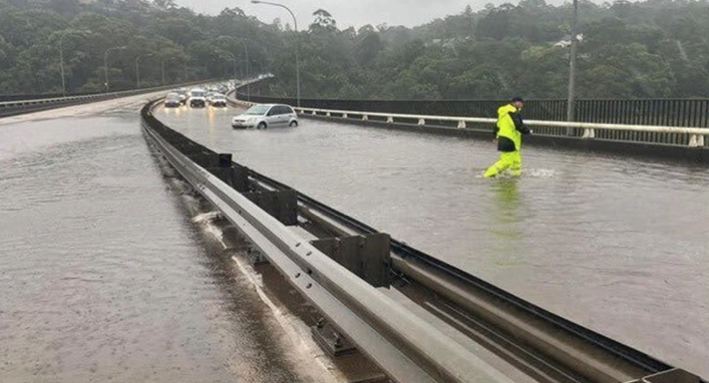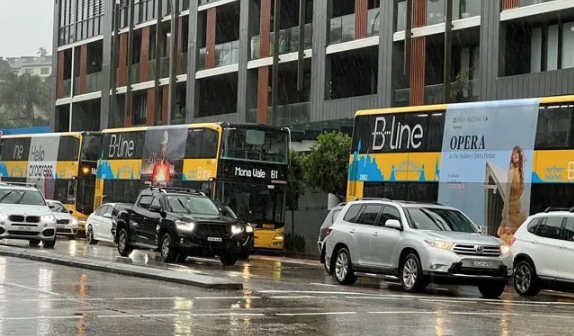In recent months Sydney has been hit with two serious bouts of weather resulting in serious flooding. The behaviour of the average motorist in these situations baffles us, as human beings time and time again, prove that Charles Darwin and his survival of the fittest is a complete lie.

THE MECHANICAL RAMIFICATIONS OF WATER:
Two key items of note for any motorists.
- Once water has risen above the sill line on most passengers vehicles. Insurance companies consider them a Stat write off.
- The main ECU (computer that operated everything in most cars) is normally located on the floor of the passengers side of majority of vehicles. Once that computer is wet, your car is finished.
Flash flooding warnings came pouring in a few weekends ago and we watched as locals rushed to protect their own belongings. We watched as the local dealership promotional ute parked parallel to a creek known for flooding, was left to fend for itself for an entire weekend and then we watched as people tested the depths of overflowing creeks and rivers and drove their vehicles through it all.
Leaving parked cars in the direct path of destruction is one thing but to knowingly driving into these waters is a whole other issue. The fact of the mater is this is very dangerous behaviour for a multitude of reasons. With no visual depth meters or signings of the roads you can never be certain of the actual depth of the water. Roads you may be familiar with, may present a safe enough depth to brave driving through but with the muddy flood waters, there is no way to know if the road is still in the condition it was when you last saw it.
Flooding does catastrophic damage and its not uncommon for large hunks of road to shift, sink or be dragged away. The results can be deadly as your car plummets into a chasm that was not there the day before.

But this is not the biggest risk with driving through flood waters. The issue most people don’t account for is water into the engine can happen at a very low depth of water. The intake for engines is often only a few inches from the road surface and a large gulp of water into most motors will stop them in their tracks. This is hardly a deadly situation even if it can be an expensive one. This issue becomes a standard vehicle in flood waters.
Flood waters rise very quickly and just as quickly drop, the cause is trapped flowing water, making its way though natural, creeks and river beds and eventually out to sea. The rate flow will become very rapid and this is where flood waters can kill.

Your car immobilised by water, you trapped inside and going for the ride nearly always results in death. ABC news carried out an experiment with a Nissan Patrol in a simulated flood water situation to demonstrate how water lifts a vehicle and renders its heavy weight useless against strong currents. You can see the experiment here.
This example shows beautifully that even cars people affiliate with off road and hard working vehicles, that should be capable of overcoming the trying circumstances of flood water are just as susceptible to the problem.
The moral of the story is you should never drive through flood waters.
www.gdlauto.com.au https://gdlauto.com.au/blog/
https://www.facebook.com/GDLAutomotive
https://www.facebook.com/gdlsubaruparts
https://www.instagram.com/accounts/login/?next=https%3A%2F%2Fwww.instagram.com%2Fgdlautomotive%2F
https://www.instagram.com/accounts/login/?next=https%3A%2F%2Fwww.instagram.com%2Fgdlautoparts%2F
https://www.linkedin.com/in/dannie-ly…
https://www.tiktok.com/@gdl_autosport?
Have a project car that needs parts or a daily that needs more go? We have what you need. www.gdlautosport.com.au – performance parts https://parts.gdlauto.com.au

